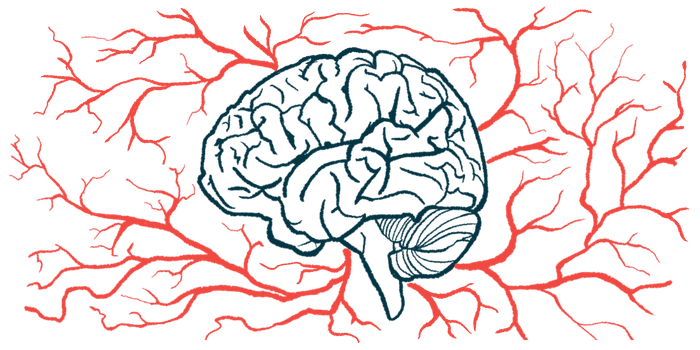Circadian rhythm of certain stem cells may offer treatment approach
Study supports potential link between myelin disorders and sleep problems
Written by |

Targeting genes that control the daily activity cycle of cells that are responsible for repairing myelin in the brain and spinal cord may be a useful strategy for treating multiple sclerosis (MS), a new study shows.
Findings also point to a potential link between myelin disorders such as MS and problems with sleep.
The study, “BMAL1 loss in oligodendroglia contributes to abnormal myelination and sleep,” was published in Neuron.
MS is caused by inflammation in the brain and spinal cord that damages the myelin sheath, a fatty covering around nerve fibers that helps them to send electrical signals. Myelin in these regions is mainly made by specialized cells called oligodendrocytes.
OPCs are brain stem cells able to grow into mature myelin-making cells
Oligodendrocyte precursor cells, or OPCs, are a type of brain stem cell that’s able to grow into mature myelin-making oligodendrocytes. OPCs also play their own roles in supporting the function of other brain cells.
“To me, OPCs are the most interesting cell in the central nervous system, partly because in many ways, they can act like all the other cells in the central nervous system,” Erin Gibson, PhD, lead author of the study at Stanford University, said in a press release.
Finding ways to prompt OPCs to make more oligodendrocytes and repair myelin is seen as a promising strategy for treating MS, but scientists still don’t fully understand how these cells normally function.
In this study, researchers wanted to examine whether OPCs follow a circadian rhythm, where cellular activity changes at specific time points throughout the day. Many cells in the body have been previously shown to follow circadian rhythms, but it’s been unclear whether OPCs specifically show different activity at different points in the day.
The scientists had previously found that OPCs in mice do indeed follow circadian rhythm. For example, they found that cells tended to divide more actively at night time.
To further investigate these rhythms, the researchers engineered mice whose OPCs lacked a gene called Bmal1, which has been established as a master regulator of the circadian rhythm in a variety of cell types.
Results showed engineered mice had fewer OPCs in specific brain regions, such as the cortex (the outer layer of the brain that plays an essential role in cognition) and the corpus callosum (a structure that connects the right and left sides of the brain). These OPCs lacking Bmal1 also showed notable changes in shape.
OPCs lacking Bmal1 appear truncated
“One of the most shocking things was how different these OPCs looked following Bmal1 removal. OPCs are normally these beautiful cells with complex tree-like morphology. But these cells were completely truncated,” Gibson said.
Further investigation of the mice indicated OPCs lacking Bmal1 were less able to move to different parts of the brain during early development in the womb, leading to fewer OPCs in specific brain regions, and these abnormalities then persist throughout adulthood.
In addition, the lack of Bmal1 led to dysregulation in the activity of several other genes that are known to be important for controlling OPC activity.
Consistent with reduced levels of OPCs in several brain regions when these cells lacked Bmal1, the researchers also found lower counts of oligodendrocytes. In line with fewer of these myelin-making cells, nerve fibers in these regions of the mice’s brains had thinner myelin sheaths.
While these experiments were done in mice engineered to lack Bmal1 in their OPCs from birth, further experiments showed that removing this gene from the OPCs of adult or adolescent mice led to worse repair of damaged myelin.
Collectively, the data indicate “the ability of OPCs to dynamically respond to a demyelinating lesion and properly remyelinate is impacted by BMAL1 status,” the researchers wrote. This suggests that targeting this circadian rhythm gene and related molecular pathways may be a useful way to promote myelin repair in MS.
“We haven’t really done a great job of developing drugs that target an enhancement in oligodendrogenesis and remyelination,” Gibson said. “This tells us that this is a new molecular pathway that plays a role in how these OPCs proliferate and differentiate and migrate into lesions. And so if we can target it, maybe we might be able to make that process more efficient.”
In functional assessments, mice lacking Bmal1 in their OPCs showed abnormalities in their walking patterns and had poorer performance on tests of short-term memory. These mice also showed signs of sleep fragmentation, spending less time in deep, non-dreaming sleep. They took more naps as well at times when mice are normally active.
Increases in so-called active phase napping an early sign of Alzheimer’s
“What was interesting about that is that increases in so-called active phase napping is now believed to be one of the earliest signs of Alzheimer’s disease,” Gibson said.
The finding also implies that sleep fragmentation might be associated with disorders of myelin such as MS. Further supporting this idea, an analysis of genetic data from 47,429 MS patients and 68,374 people without the disease showed that individuals carrying genetic variants linked to a higher risk of sleep fragmentation were more likely to have MS.
Based on these data, the researchers called for further study into the potential link between sleep problems and MS.
“As a field, we’ve never looked into this relationship,” Gibson said, adding this may help explain “why some disruptions in circadian shifts in sleep, for example, in night workers, can increase their risk of having demyelinating disorders like multiple sclerosis.”
With further research, “we might be able to understand this intersection of myelin and sleep biology,” she concluded.








